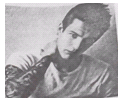-

In many countries, tattoos are in fashion (时尚). On TV you can often see a famous actor or musician with a tattoo on his arm or foot. Many sports players have them, too. In the US, tattoos are very popular. Forty percent of Americans aged between 26 and 40 have a tattoo, and 60 percent of customers in US tattoo parlors are women. These people are often professional people like doctor, teachers and lawyers.
However, tattoos are not modern. In fact, they are very old in human history. For example, archaeologists (考古学家) found a human in ice from 5,000 years ago. He had 57 tattoos on his back, ankles, legs, knees and feet. Tattoos were used for many different reasons. In ancient Egypt, people got tattoos because they were “beautiful”. But in ancient Rome, tattoos were negative (负面的) and put on criminals and prisoners. In India, tattoos were religious (宗教的).
In the 16th and 17th century, European sailors (船员) arrived on the islands of Polynesia. They saw tattoos for the first time. The people on the islands had tattoos on their shoulders, chests, backs and legs. Often the tattoos were of animals or natural features like a river or a mountain. The European sailors liked them and made their own tattoos, so the idea traveled to Europe. Tattoos in Polynesia are still important today. They show information about a person’s history, their island or their job.
So is there a connection (联系) between traditional tattoos and fashionable tattoos? And can you call tattoos a fashion? Chris Rainier is an expert in tattoos and his book Ancient Marks has photos of tattoos from all over the world. He thinks people in modern societies often have tattoos because they are a connection to the traditional world. But tattoos aren’t a fashion like clothes or a haircut because you can’t put them on and take them off again like a jacket or a hat. They are permanent (永久的) and for life.
1.When were tattoos brought to Europe?
A. 5,000 years ago. B. 60 years ago.
C. Until recently. D. In the 16th and 17th century.
2. What does the underlined word “parlors” mean?
A. School. B. Stores.
C. Hospitals. D. Theaters.
3. What’s the writer’s opinion about tattoos?
A. Tattoos are religious in modern societies.
B. Tattoos connect tradition with fashion.
C. Tattoos are a fashion among famous people.
D. Tattoos show information about a person’s hobby.
4.What would be the best title for the passage?
A. Tattoos' History.
B. Tattoos in Polynesia.
C. Tattoos on a Human in Ice.
D. Tattoos in Fashion and for Life.
-
Wow! You’ve got so many clothes.
-- But ______ of them are in fashion now.
A. none B. both
C. neither D. all
-
---Wow! You’ve got so many clothes.
---But ________ of them are in fashion now.
A. all B. both C. neither D. none
-
(2013•扬州市)---Wow! You've got so many clothes.
---But ________ of them are in fashion now.
A. all B. both C. neither D. none
-
—Wow! You’ve got so many clothes, Kate!
—But _______ of them are in fashion now, I still can’t find the most-loved one!
A. all B. both C. none D. neither
-
—Wow! You’ve got so many clothes, Kate!
—But _______ of them are in fashion now, I still can’t find the most-loved one!
A. all B. both C. none D. neither
-
—Wow! You’we got so many skirts.
—But________ of them are in fashion now.
A.all B.both C.neither D.none
-
There are many interesting holidays in Western countries. This holiday is always on a Sunday between March 22nd and April 25th. A popular activity during it is to hide eggs around your home or garden for friends or relatives to find. It's ______.
A.Christmas B.Halloween C.Easter
-
April 1st is a day on which,in some countries,people can play jokes on others,and many people are trying to do so on this special day.If you succeed in tricking somebody,you ______ laugh and say,“April Fool!” The person who has been tricked by you laughs too,and he will never be angry ______ you.
One April 1st,a bus was running along a country road.Then it slowed down and stopped.The driver tried ______ to start the bus,but he failed.Then he turned to the passengers with a ______ look on his face and said,“This poor bus is ______ old.There is probably something wrong with the engine(发动机).It isn't going as ______ as before.There is only one thing we can do ______ we want to get home today.I shall count three,and on the word THREE,I want you all to lean(身体倾斜) forward suddenly as hard as you can.Only in this way,it may get the bus started again.But if you don't ______ my advice,I'm afraid there is nothing else I can do.” So all the passengers leaned back against their seats and ______ the driver's order.Then the driver began to count.“Get ready,” he said.“One!Two!Three!” All the passengers tried hard to lean forward when they heard his last word,and the bus immediately started again.“April Fool!” the driver said loudly with ______.The passengers suddenly realized it was April 1st and the bus was full of laughter.
1.A. seriously B. once C. never D. usually
2.A. to B. in C. with D. on
3.A. hard B. nothing C. hardly D. best
4.A. happy B. worried C. funny D. sad
5.A. running B. walking C. getting D. taking
6.A. well B. bad C. great D. better
7.A. but B. unless C. if D. so
8.A. follow B. know C. understand D. remember
9.A. wrote B. heard C. got ready for D. planned
10.A. a smile B. a look C. a hurry D. a surprise
-
— Many housewives like the show named We Are In Love (《我们相爱吧》) on Jiangsu TV.
— That’s true. ______ my aunts _____ my mother is crazy about it.
A. Not only; but also B. Either; or C. Both; and D. Neither; nor
